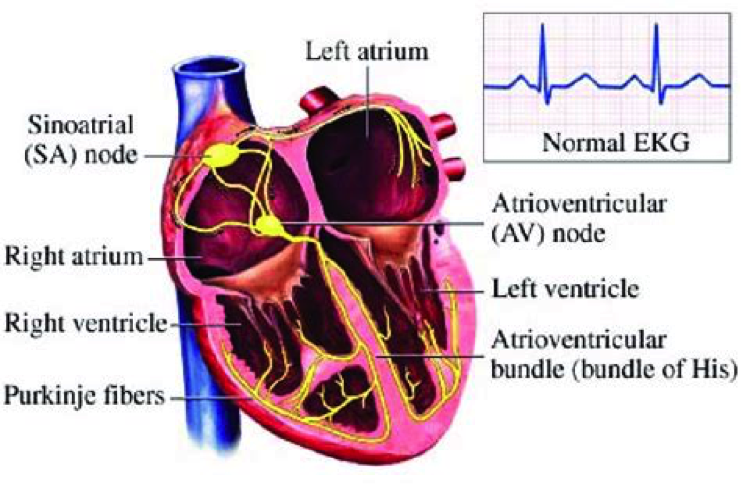The Heart’s Electrical System
The heart is a muscle about the size of your clenched fist with the task of pumping blood throughout the body all day long, every day. Within the heart there are four chambers. The upper chambers are known as the atria and lower chambers are known as the ventricles. Used blood from around the body is pumped into the right atrium, down to the right ventricle then out to the lungs where the blood becomes oxygenated. At this point, the blood returns to the heart through the left atrium into the left ventricle and out to the body to oxygenate organs throughout the body. This process never ceases during our lives.
All of this coordinated movement of blood is possible because of carefully coordinated electrical signals produced in the heart that allow it to beat consistently and rhythmically. Normally, the electrical impulses begin in the SA node at the top of the right atrium(right upper chamber). The frequency of the signal is determined by the body’s current state and may vary significantly if the body is at rest, active, stressed or subject to hormonal fluctuations.
The AV node (hearts electrical junction) acts as a pacemaker of sorts, once the electrical signal reaches the center of the heart. This node regulates the ventricular (lower chamber) contractions. The video below gives you an idea of how a normal electrical impulse travels through the heart, creating a synchronized and efficient heartbeat. This is known as sinus rhythm.

BIOSENSE VIDEO HERE
When the heart can no longer maintain sinus rhythm, usually due to misfiring electrical signals, patients experience what is known as an irregular heartbeat or arrhythmia.

